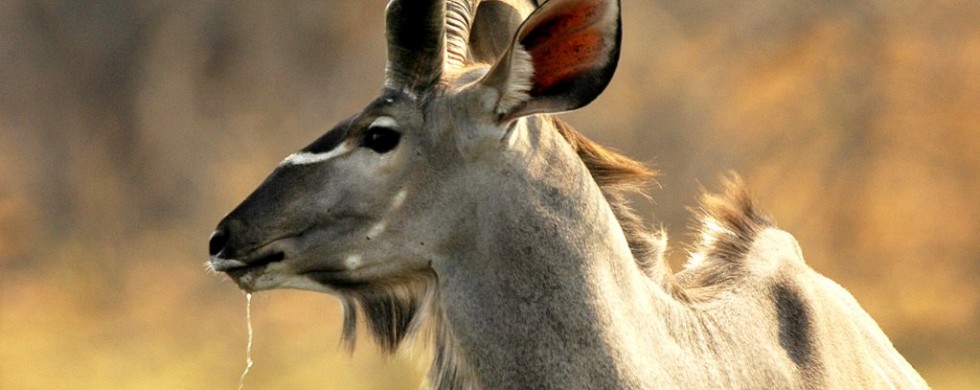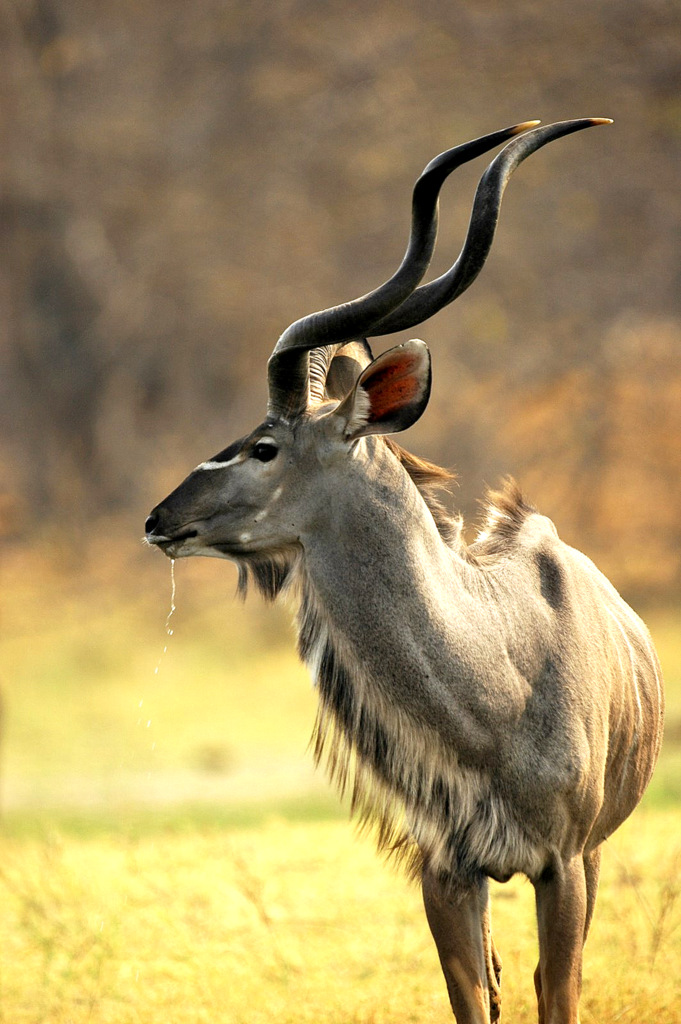
15
2010Kurly Ku(du) – April 2010
Shot of the Month – April 2010
What can weigh up to 600 pounds and has a mane?
No, try again. The male lion only weighs up to 400 pounds.
The picture is a big clue. It is the Greater Kudu.
Believe it or not, these massive antelopes are only the 2nd largest antelopes in the world. For those of you keeping score at home the largest antelope is the Eland, weighing in at up to 1,500 pounds. But that is a story for another month.
Greater Kudu can be found across a wide range of Africa. In the east, they live in Ethiopia, Tanzania, Eritrea, and Kenya. In the south, they live in Zambia, Angola, Namibia, Zimbabwe, South Africa, and in Botswana, where this photo was taken.
Kudus prefer to live in thick, wooded areas, rocky hillsides, dry river beds, and areas with lots of water. Turns out that kudu are vulnerable on the open plains as they do not run very fast and they do not have much stamina — ergo with nowhere to hide they can be easily run down by lions, leopards, and wild dogs. However, among the thick bush kudu have a better chance of success. Despite their size, kudu are excellent jumpers and a male can easily leap 8 feet or more (Picture a 600 lb antelope jumping clean over your head with a couple of feet to spare!) When pursued they simply leap over rocks and bushes that predators have a hard time navigating. And for the kudu, the best defense is a good offense, of sorts. Amongst the thick vegetation, their colorations and markings make them very difficult to see – so if they remain perfectly still they can often go undetected by carnivores on the prowl.
Despite their wide range kudu numbers are declining. Much of their habitat is disappearing as humans cut down the forests to make farmland. Hunting is also a big problem as trophy hunters prize those amazing cork-screw horns that are found only on males. At full maturity, the horns make a complete 2 ½ twist.
Alas, if humanity continues its relentless encroachment the kudu will soon have no place left to hide, and then, ironically, we will truly never see them again.

